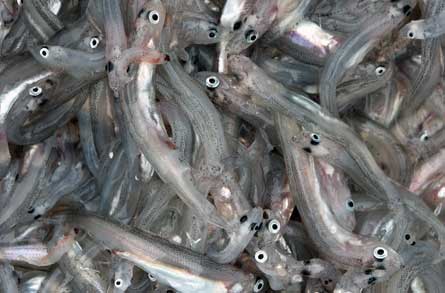As waters in the Arctic warm in response to climate change, populations of some fish species may grow at the expense of others, a new study suggests.

Researchers analyzed a century’s worth of population data for four species in major fishing regions near Russia and Norway. By combining oceanographic data with the census data for certain species of cod, herring, haddock and capelin, University of Oslo marine biologist Leif Christian Stige and his colleagues learned how well young fish do in warmer and cooler water temperatures. They report their findings online June 8 in the Proceedings of the Royal Society B.
In general, populations of all four fish species did well during warmer-than-normal years, the researchers found. That could stem from a number of factors, says Stige. Fish grow more quickly when waters are warm, so they spend less time at a size that makes them vulnerable to larger predators, he notes. Also, warmer years in those regions also seem to be associated with higher growth of algae and other organisms at the base of the food chain, another likely contributor to faster growth and higher survival rates in fish.
But warmth-induced good times didn’t last for all species, the researchers found. In the years after warm spells, the numbers of young capelin — a small type of smelt that’s an important prey species for larger fish — plummeted, probably because they were consumed by the large numbers of herring, cod and other predatory fish that had thrived and survived the previous warm year. Whether these populations might reach a new stable size in subsequent years is not clear, the researchers say.
Although some scientists suggest that warmer seas will be more biologically productive, the new findings suggest that the influences of a warmer climate may be mixed at best, Stige says. It’s also tough to extrapolate how the effects of sea-surface temperature might unfold in a future world that is consistently warmer than today but that still has year-to-year temperature variations, he adds.







